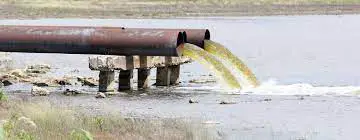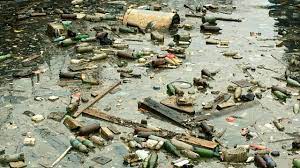Estimates suggest that nearly 1.5 billion people lack safe drinking water and that at least 5 million deaths per year can be attributed to waterborne diseases. With over 70 percent of the planet covered by oceans, people have long acted as if these very bodies of water could serve as a limitless dumping ground for wastes.
Raw sewage, garbage, and oil spills have begun to overwhelm the diluting capabilities of the oceans, and most coastal waters are now polluted. Beaches around the world are closed regularly, often because of high amounts of bacteria from sewage disposal, and marine wildlife is beginning to suffer.
Perhaps the biggest reason for developing a worldwide effort to monitor and restrict global pollution is the fact that most forms of pollution do not respect national boundaries.
The first major international conference on environmental issues was held in Stockholm, Sweden, in 1972 and was sponsored by the United Nations (UN).
This meeting, at which the United States took a leading role, was controversial because many developing countries were fearful that a focus on environmental protection was a means for the developed world to keep the undeveloped world in an economically subservient position.
The most important outcome of the conference was the creation of the United Nations Environmental Program (UNEP).
UNEP was designed to be the environmental conscience of the United Nations, and in an attempt to allay fears of the developing world, it became the first UN agency to be headquartered in a developing country, with offices in Nairobi, Kenya.
In addition to attempting to achieve scientific consensus about major environmental issues, a major focus for UNEP has been the study of ways to encourage sustainable development increasing standards of living without destroying the environment.
At the time of UNEP’s creation in 1972, only 11 countries had environmental agencies. Ten years later that number had grown to 106, out of which 70 were in developing countries.
Read Also : Water Pollution Sources and Classifications
In summary, clearly, the problems associated with water pollution have the capabilities of disrupting life on our planet to a great extent. Congress has passed laws to try to combat water pollution thus acknowledging the fact that water pollution is, indeed, a serious issue. But the government alone cannot solve the entire problem.
It is ultimately up to us, to be informed, responsible and involved when it comes to the problems we face with our water.

We must become familiar with our local water resources and learn about ways for disposing harmful household wastes so they do not end up in sewage treatment plants that can’t handle them or landfills not designed to receive hazardous materials.
In our yards, we must determine whether additional nutrients are needed before fertilizers are applied, and look for alternatives where fertilizers might run off into surface waters.
We have to preserve existing trees and plant new trees and shrubs to help prevent soil erosion and promote infiltration of water into the soil. Around our houses, we must keep litter, pet waste, leaves, and grass clippings out of gutters and storm drains.
These are just a few of the many ways in which we, as humans, have the ability to combat water pollution.
As we head into the 21st century, awareness and education will most assuredly continue to be the two most important ways to prevent water pollution. If these measures are not taken and water pollution continues, life on earth will suffer severely.
Global environmental collapse is not inevitable. But the developed world must work with the developing world to ensure that new industrialized economies do not add to the world’s environmental problems. Politicians must think of sustainable development rather than economic expansion.
Conservation strategies have to become more widely accepted, and people must learn that energy use can be dramatically diminished without sacrificing comfort. In short, with the technology that currently exists, the years of global environmental mistreatment can begin to be reversed.
Water Pollution is the contamination of streams, lakes, underground water, bays, or oceans by substances harmful to living things. Point source pollution occurs when harmful substances are emitted directly into a body of water.
Nonpoint source pollution occurs when pollutants are indirectly introduced into the environment through transport or environmental change. Major water pollutants are chemical, biological, or physical materials.

